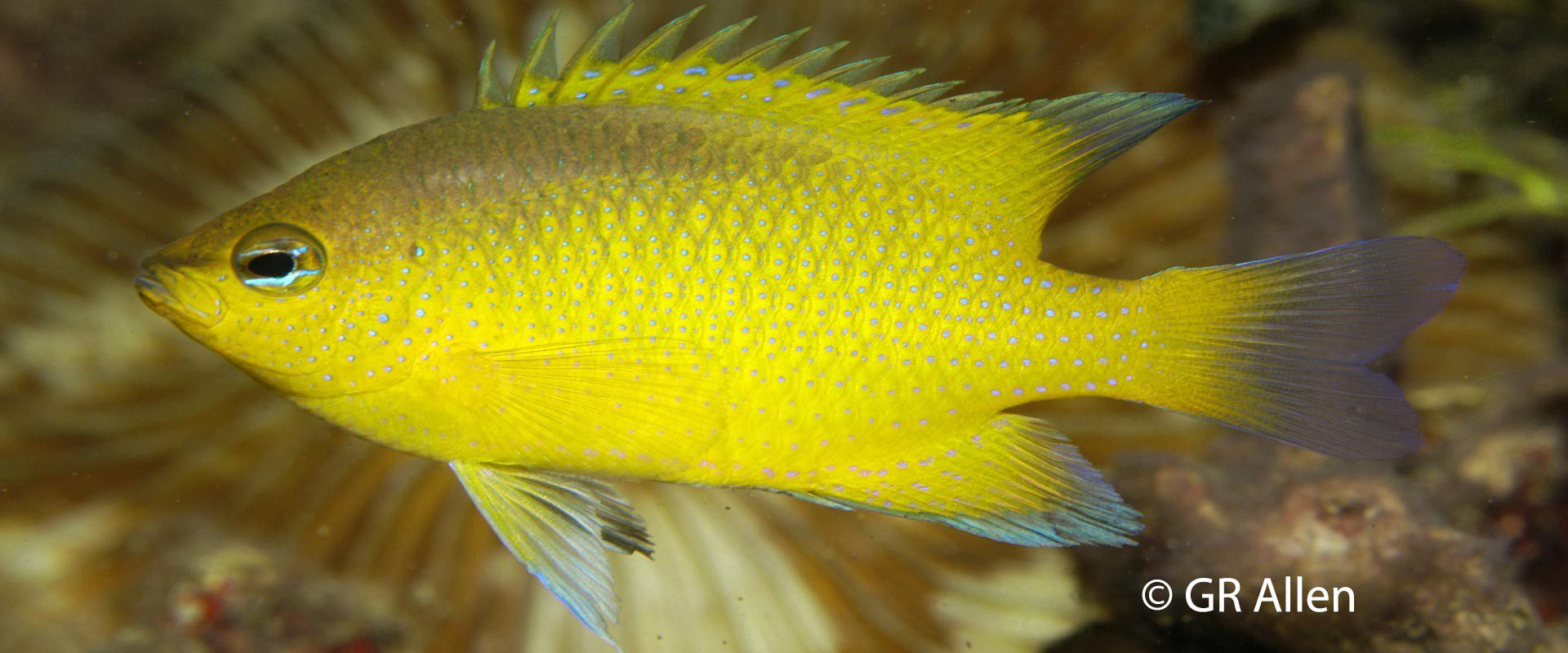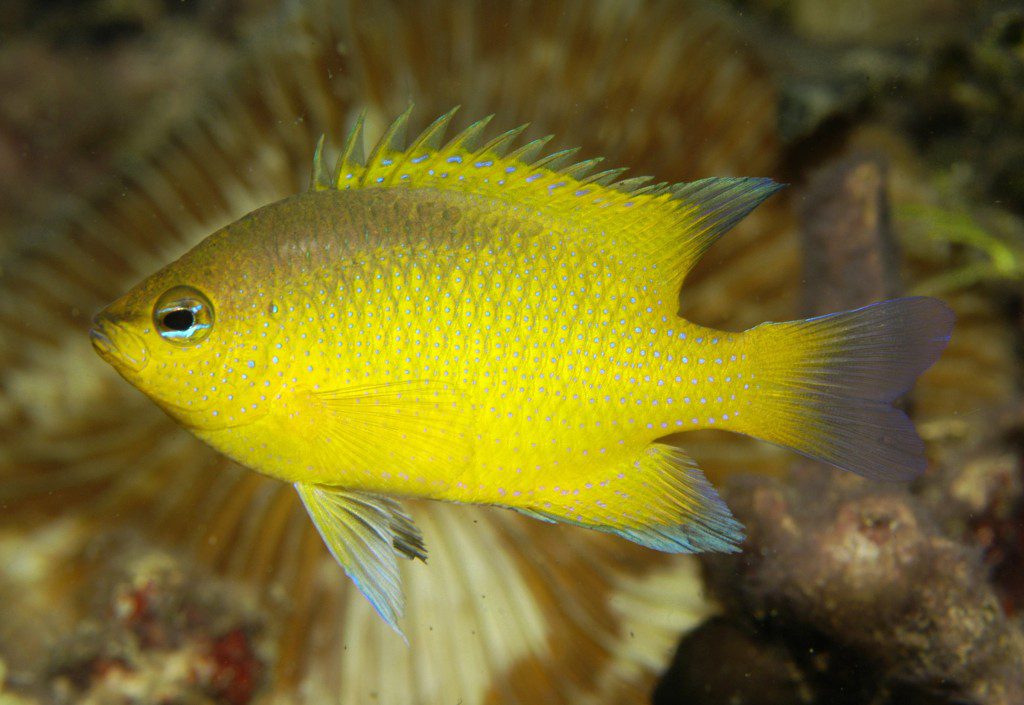Two New Damsels Named to Honor Two Diving Divas. BHS fish species count now 1759! By Mark Erdmann
Two new BHS damsels named to honor two diving divas!
BHS fish species count now 1759!
By Mark Erdmann
It’s an honor and a great pleasure to announce the recent description of two new BHS endemic damselfishes, named after diving divas Maurine Shimlock and Dr. Ellen Gritz. The two beautiful new fish species were previously considered geographic color variants of the damselfish Chrysiptera oxycephala, but genetic analysis by our colleague Dita Cahyani from the Indonesian Biodiversity Research Centre has shown conclusively that the Cendrawasih Bay and Raja Ampat populations actually represent separate species.
With this genetic evidence in hand, my colleague Gerry Allen and I were delighted to describe the gorgeous lemon-yellow damsel from Cendrawasih Bay after our dear friend Maurine Shimlock. Given Maurine’s tireless efforts to explore and promote the Bird’s Head, and especially Cendrawasih Bay, naming a Cendrawasih endemic after her seemed a most fitting tribute! As an added bonus, this fish is common on the shallow reefs of Cendrawasih – which means Maurine won’t need to dive to 70m (where many of our new species finds nowadays come from!) to see her piscine namesake.
Similarly, we were also very pleased to be able to name the new Raja Ampat damsel Chrysiptera ellenae, in honor of Dr. Ellen Gritz – a world-renowned cancer researcher who also happens to be a good friend and a generous supporter of the Bird’s Head Seascape. This seemed a particularly appropriate fish to name after Ellen, given its beautiful blue coloration (Ellen’s favorite!) and the fact that it is a sibling species to C. maurinae (Maurine and Ellen have been diving buddies for years!).
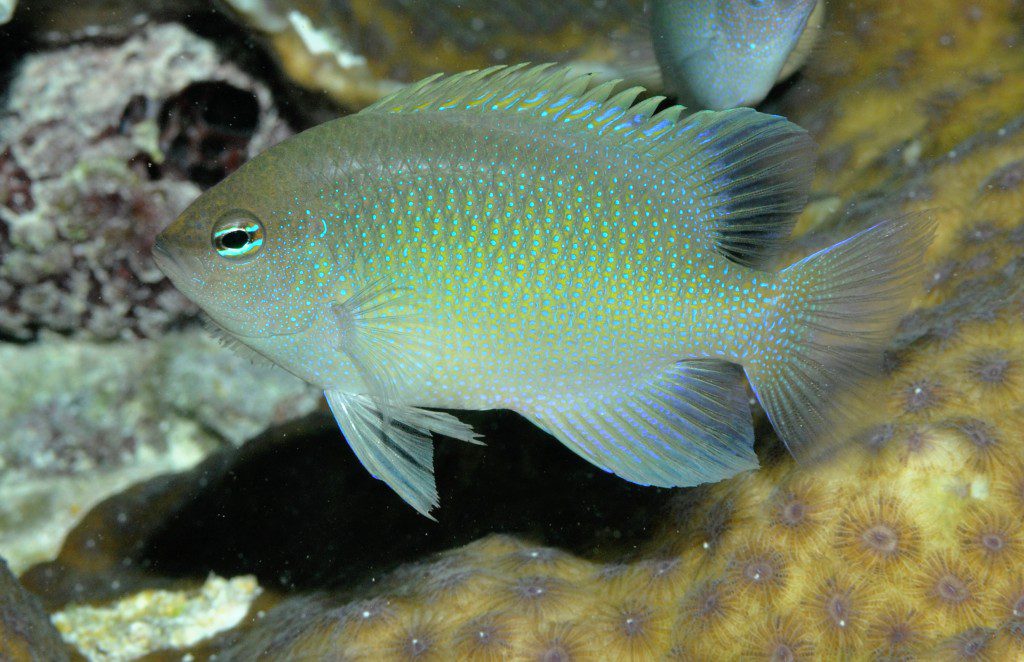
Chrysiptera ellenae – Ellen’s damselfish, found on shallow protected reefs of Raja Ampat including Wayag and Ayau lagoons, Kri lagoon, and the karst channels of SE Misool. MV Erdmann photo.
Both of these new species are found in close association with branching coral colonies on shallow sheltered reefs. This includes the majority of Cendrawasih’s mainland reefs for C. maurinae, and mostly lagoonal areas (such as the lagoons of Wayag, Ayau, Kri and SE Misool’s Mesempta karst channels) for C. ellenae in Raja Ampat. Both species also show significant colour changes over the course of their lifetime; C. maurinae has a neon blue upper body and bright yellow lower half as a juvenile, but over time the blue gradually disappears and the adults are bright yellow. By comparison, C. ellenae exhibits a striking neon blue juvenile phase, gradually changing to a more greenish-blue as it matures.
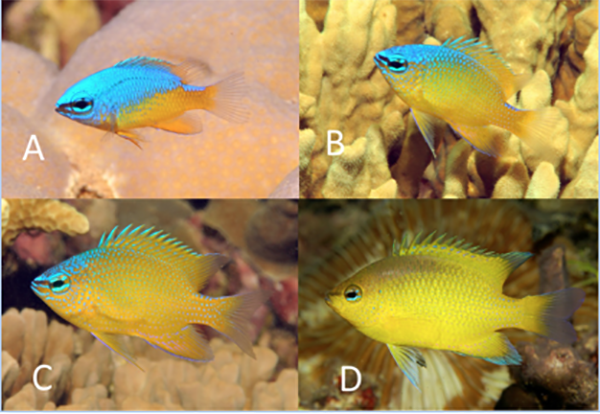
Life history stages of C. maurinae, where the neon blue crest in the juvenile gradually disappears to reveal a gorgeous lemon yellow adult. Photos GR Allen.
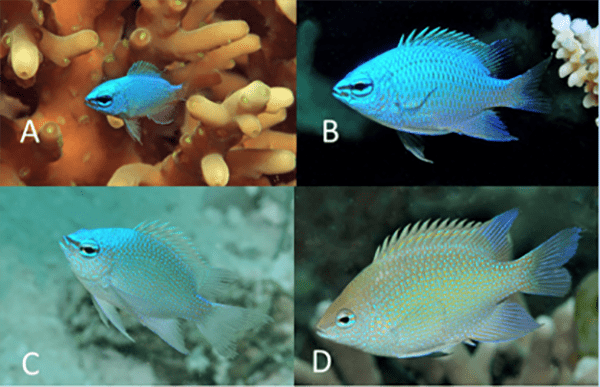
Life history stages of C. ellenae, showing the gradual change from neon blue juvenile to greenish-blue adults. Photos GR Allen.
With the addition of these two new species, the total count for the Bird’s Head rises to 1759 reef fish species recorded, including 1563 species from Raja Ampat, 1044 from Cendrawasih, and 1053 from the FakFak-Kaimana coastline. Perhaps 2016 will be the year we break the 1800 species mark for the Bird’s Head! In the meantime, if you’re fortunate enough to be diving in Raja Ampat or Cendrawasih this year, keep a lookout for the latest two endemic fishes from the Bird’s Head!
Mark Erdmann is Conservation International’s Vice President of Asia Pacific Marine Programs. Though now based in New Zealand after 23 years in Indonesia, he is still intimately involved with the Bird’s Head Seascape and frequently disappears into its remote corners for weeks on end….





































